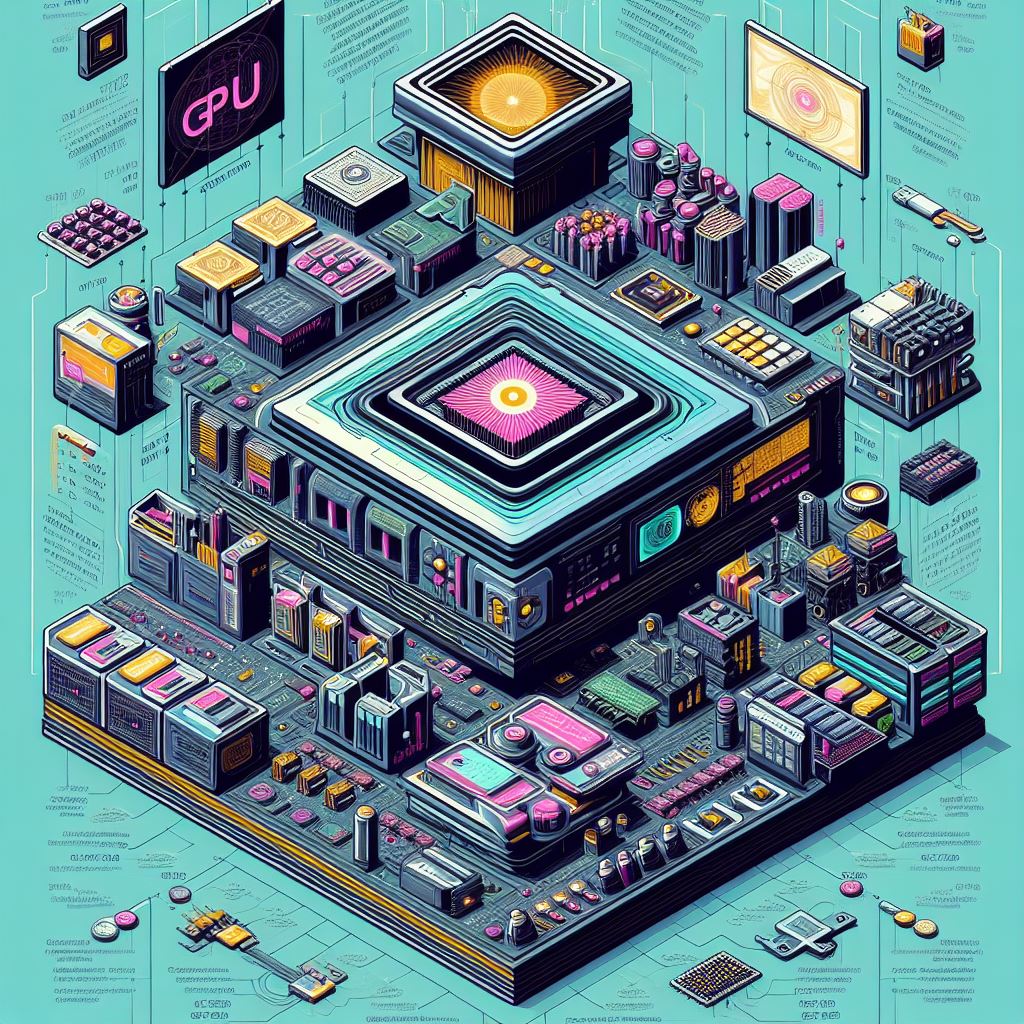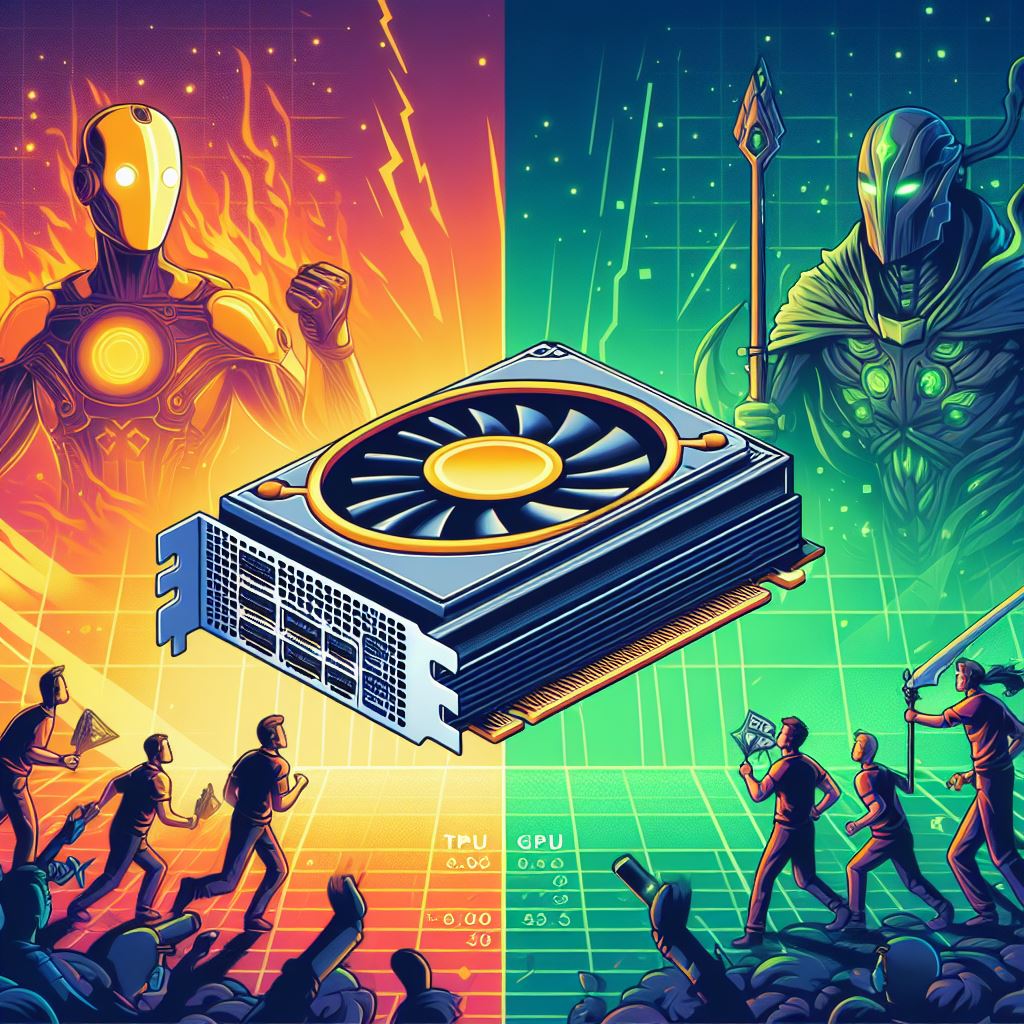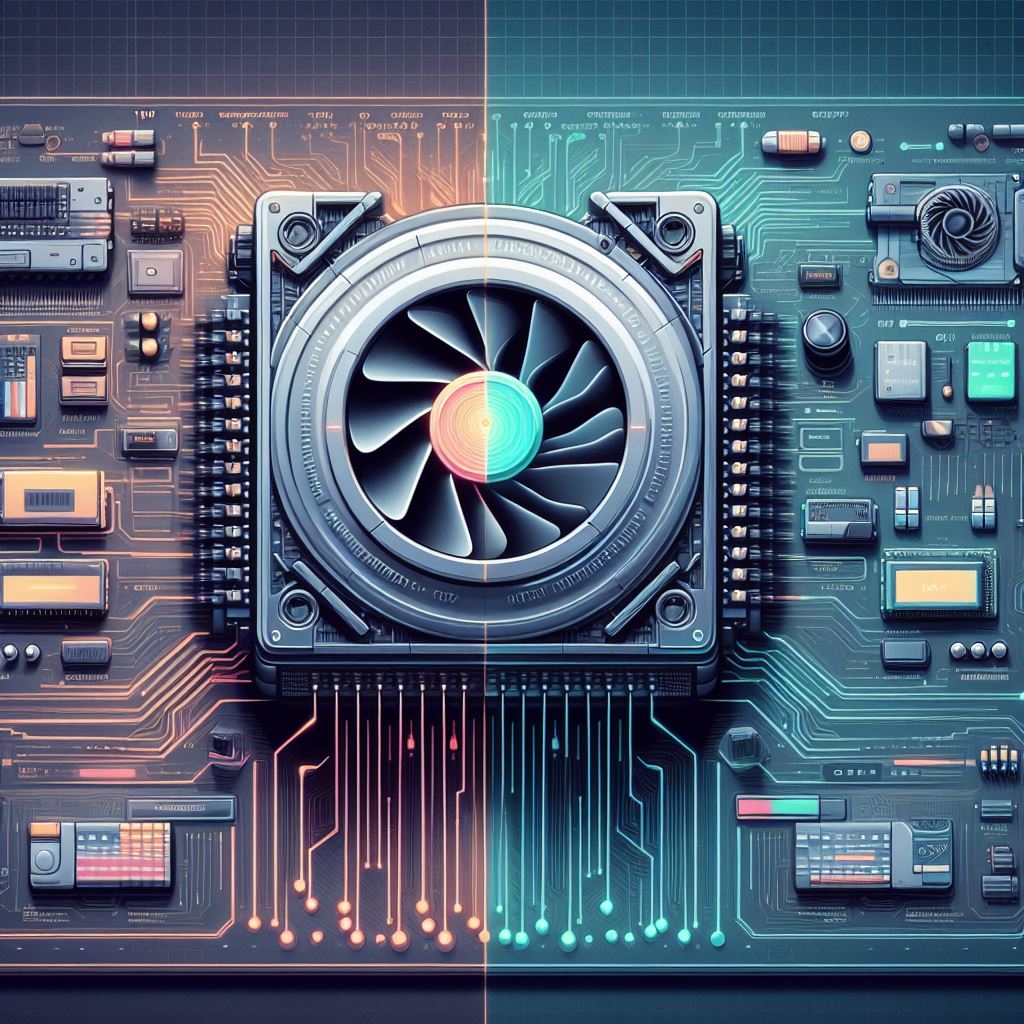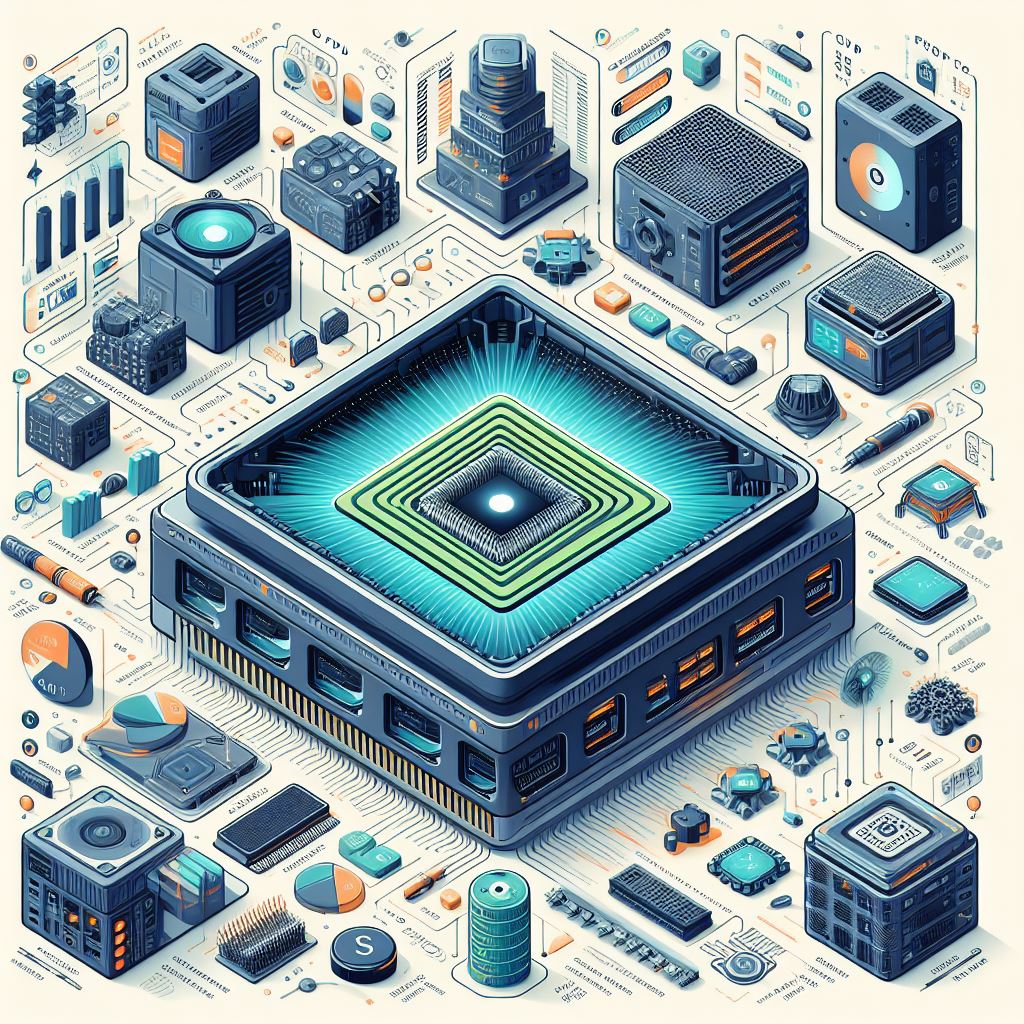
TPU vs GPU: What is the Difference?
TPU vs GPU: What are TPUs and GPUs?
TPUs (Tensor Processing Units) are specialized chips that Google designed for machine learning. They’re really good at doing complex math that’s needed for training neural networks. That’s why they’re often used for that kind of stuff. They’re way faster than regular processors and can help you train models much quicker than using a regular graphics card (GPU).
GPUs (Graphics Processing Units) are also specialized chips, but they’re made by companies like NVIDIA and they’re mainly used for rendering images and video in things like video games. However, because they’re really good at doing lots of calculations at the same time, they’re also useful for machine learning tasks.
TPU vs GPU: Architectural Differences

TPUs: TPUs work in conjunction with regular processors (CPUs) – the CPU tells the TPU what to do, and the TPU does it really fast. This lets the CPU handle other tasks while the TPU focuses on the math.
GPUs: GPUs are more like mini supercomputers. They can handle lots of calculations at the same time and are really good at doing the same thing over and over again, which is perfect for rendering images and video. They’re also pretty good at machine learning, but they’re not as specialized as TPUs.
When to Use TPU vs GPU:
TPUs: You should consider using a TPU when:
- You’re training a big neural network model and you need it to be done quickly.
- Speed is really important to you. TPUs can train models much faster than GPUs.
- You’re using TensorFlow, which works really well with TPUs.
GPUs: You might want to use a GPU when:
- You need a chip that can handle both machine learning and graphics rendering.
- You don’t need your model to be trained as quickly as possible.
- You’re using a machine learning framework that isn’t TensorFlow.
TPU vs GPU: Pros and Cons:

TPU Pros:
- TPUs can train models super fast.
- TensorFlow works really well with TPUs.
- They’re cost-effective when it comes to training time.
Cons:
- They’re not as versatile as GPUs when it comes to working with other frameworks.
- You might need to do some extra programming to get them to work with certain frameworks.
Worldwide – Pick from 100K+ items to enjoy 100%OFF-APP New Users Only
GPU Pros:
- You can use them for both machine learning and graphics rendering.
- They work with lots of different frameworks.
- There’s a big community of people using them and creating tools for them.
GPU Cons:
- They’re not as fast as TPUs for training models.
- They use more power and can be more expensive to run.
TPU vs GPU: Performance and Speed
TPUs
TPUs are designed for training deep learning models and they’re really good at it. They can train models much faster than GPUs.
GPUs
GPUs are still powerful tools, but they’re not as fast as TPUs for training deep learning models.
Cost Considerations: TPU vs GPU

TPUs: Although you might need to do some extra programming to make them work with certain frameworks, the time you save on training can often make up for that.
GPUs: GPUs are more widely available and there’s a big community of people using them, so they’re more established. However, if you’re training models for a long time, the cost of using a GPU can add up. 🚀🤖
TPU vs GPU: What are some real-world uses for TPUs?
TPUs (Tensor Processing Units) are great for speeding up machine learning tasks, so they can be found in all sorts of different places. Here are just a few examples:
Deep Learning and Neural Networks:
Using TPUs, you can train really big neural networks for stuff like image recognition, natural language processing, and speech recognition. Google uses them in services like Google Photos and Google Search.
Recommendation Systems:
E-commerce sites and streaming services use recommendation systems to tailor content to each user. TPUs help make those systems work better and faster.
Healthcare and Medical Imaging:
Doctors use TPUs to analyze medical images, like X-rays, MRIs, and CT scans. This helps them catch diseases early and make better diagnoses.
Genomics and Bioinformatics:
Scientists use TPUs to process genomic data faster. This is important for things like analyzing DNA sequences and looking for genetic variations.
Natural Language Understanding (NLU):
Chatbots, virtual assistants, and sentiment analysis all use language models. TPUs help make those models better. Google’s BERT (Bidirectional Encoder Representations from Transformers) model is one example.
Autonomous Vehicles and Robotics:
Self-driving cars rely on neural networks to see and decide what to do. TPUs help make those neural networks work faster, making self-driving cars safer.
Financial Services:
Banks and investment firms use TPUs for fraud detection, credit risk assessment, and even trading. Speed is really important in financial markets, so TPUs come in handy.
Climate Modeling and Earth Sciences:
TPUs help scientists model climate change and analyze big environmental data sets. This is important for studying things like global warming and finding new energy sources.
Scientific Research:
TPUs speed up simulations in all sorts of fields, like physics, chemistry, and materials science. This helps researchers explore new ideas and discover new things faster.
Industrial Automation and Quality Control:
Factories use TPUs to monitor their processes, spot defects, and predict when maintenance might be needed. This helps keep their products consistent and high-quality.
Keep in mind that TPUs are always getting better, so there will probably be even more cool applications for them in the future. Who knows what awesome stuff we’ll be able to do with them next? 🤯
TPU vs GPU: What are the downsides of using TPUs?

- They’re not as versatile for general computing as some other options. Unlike GPUs, TPUs are designed specifically for machine learning tasks. So if you need a computer to do a bunch of different things, a TPU might not be the best choice.
- You gotta use them on Google’s cloud. That means they’re not available on other platforms like Amazon or Microsoft Azure. This can make things a bit more complicated if you’re already using another cloud service or want to keep your options open.
- They work best with TensorFlow. If you’re using another machine learning framework, you might have some compatibility issues. It’s not that they won’t work together, but you might have to do some extra tweaking to get everything running smoothly.
- They can be pricey. Since TPUs are specialized and powerful hardware, they come with a higher price tag. So before you dive in, make sure you consider the cost and whether it fits into your budget.
But hey, they’re still awesome for certain use cases! Like when you need lots of processing power for machine learning tasks and you want to do it quickly and efficiently. Just make sure you weigh the pros and cons before pulling the trigger.
TPU vs GPU: What are the advantages of TPUs over GPUs?
- Well, TPUs (Tensor Processing Units) are specialized hardware designed specifically for those complicated matrix and vector operations that come up a lot in machine learning and deep learning tasks. This makes them way faster than GPUs (Graphics Processing Units) at those kinds of jobs.
- Another big plus is that TPUs can crunch through data like nobody’s business, which means your deep learning models will train faster. This is especially helpful when you’re dealing with big datasets. And get this: TPUs can even do this without sacrificing accuracy! They support low-precision training, which lets them use less memory without losing their touch.
- The way TPUs are built, they’re really efficient when it comes to moving data around in memory. They have a special memory hierarchy that helps them keep data close to where it needs to be, which means less time wasted shuffling stuff around. Plus, they’re designed to work seamlessly with TensorFlow, the popular framework for building machine learning models.
- One of the coolest things about TPUs is that they’re available on the Google Cloud Platform, which makes it easy to scale up your training workloads as needed. You can rent them in the cloud without having to invest in expensive hardware up front. And since they’re energy-efficient, you’ll save money on power costs in the long run.
- But wait, there’s more! TPUs also let you customize the precision and activation functions to fine-tune them for specific tasks. And they natively support the bfloat16 format, which is a nice middle ground between precision and memory usage. This is super useful for big distributed training jobs.
Oh, and did we mention that Google continues to invest in improving TPUs? Yup, they’re always working on making them faster, more efficient, and easier to use.
Conclusion: TPU vs GPU
So, when you’re comparing TPUs to GPUs, think about what kind of workload you’re dealing with. If you need speed and efficiency for your machine learning and deep learning tasks, TPUs might be the way to go. Just keep in mind that they’re currently only available on GCP. But hey, who doesn’t love a little extra speed and energy efficiency? 🚀🤖
Futher Reading: Boost AI advancement with Google Cloud TPUs Google Cloud TPUs enhance efficiency and affordability across AI tasks, spanning training to inference. Leveraging top-tier data center infrastructure, TPUs ensure robustness, accessibility, and protection. Dive deeper into this at https://cloud.google.com/tpu.
Design Thinking in Business Strategy: A Comprehensive Guide





